Where Does the Money Go?



Projects
CO2e Project is dedicated to providing the public with access to carbon offsets that are of the best quality and provide the greatest return on investment to our ecology. Projects must be verifiable and provide logical and quantifiable results.
Once an offset is purchased the money is channeled to projects that are designed to reverse the effects of greenhouse gasses, referred to collectively as CO2e (equivalent Carbon Dioxide). Projects vary in scope and size, some are related to renewable energy, some are focused on reforestation, others major on capturing and storing or destroying various greenhouse gasses. The phrases “carbon offset” or “carbon” are typically used when referring to all greenhouse gasses, CO2e Project provides offsets that cover the full range of these harmful gases.
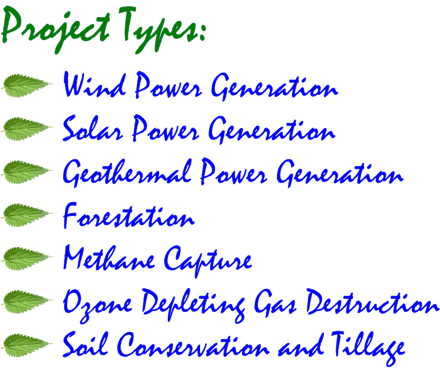
Though carbon dioxide is not the most potent of greenhouse gasses, it is produced in such larger quantities than the others that it has the greatest effect on climate change. Atmospheric CO2 has many natural causes, but, it is those of anthropogenic (man made) origins that are causing global warming. Of the anthropogenic greenhouse gases CO2 makes up eighty three percent (83%) and is mostly caused by fossil fuel burning power plants that supply the energy to light your home at night and keep the wheels of industry turning.
The biggest contributor to carbon dioxide production is coal burning power generation plants. The research for and eventual deployment of renewable energy projects, be it solar, wind, geothermal, hydroelectric, you name it, is where the largest percentage of money raised by selling offsets is directed. These projects produce energy without generating greenhouse gasses. The technology for wind, solar and geothermally produced electricity is new and still very expensive. The cost of implementation of these cutting edge power generation products and methods to deliver them exceeds the ability for the power generation industry to make a profit from their use. If it were not for the funds raised by the selling of offsets many of these projects would not exist today and the status quo of using fossil fuels to power our lives would simply continue unabated.
With carbon offsets from CO2e Project you are partnering with projects throughout the world that are working with a common purpose, to reduce global warming and restore the planet to holistic wellbeing.
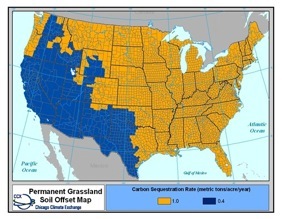

To restore the earth’s biological ability to process CO2 funds from carbon offsets are used to plant trees where existing forests have been destroyed or where no forest previously stood. By planting forests where none previously existed you provide additionality to the ecosystem’s biological mechanism to sequester carbon dioxide. Additionality refers to not only replacing what has been lost, but adding new quantities of resources in addition. To reverse adequately the levels of atmospheric CO2e introduced by man’s activities and to account for loss from attrition and forest fires it will require a net quantity greater than previously existed.
Methane capture projects receive moneys from offset purchases as well, methane is one of the most potent of the greenhouse gasses and is captured from various sources, primarily mining, landfills, farming and livestock. Once captured methane must be destroyed by combustion or stored. Though the carbon dioxide produced by methane’s combustion is undesirable it is one hundred forty times less harmful than methane gas. Because the quantity of methane produced is about one tenth the production of CO2 it is better to simply burn the gas, reducing the need to store it. Some projects have found useful means to burn off methane, using it to replace conventional power sources, thereby reducing the amount of fossil fuels being used.

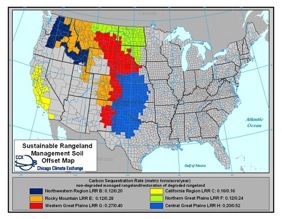
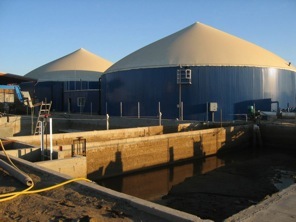
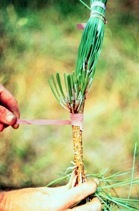

64 mw solar field
Geothermal power station
Ozone depleting Fluorinated gasses are another concern addressed by the funds from offsets. These gases are anthropogenic and it is man who must dispose of them. Projects are underway to re-capture these gasses and properly destroy them, typically by combustion.
Another biological means of sequestering CO2 is soil conservation and tillage, the proper tilling of soil, though it may seem minor, has been identified as an effective means of capturing carbon dioxide and allowing the natural processes within the soil to break down the harmful gas. No-till or strip-till farming practices are being implemented to prevent the improper tilling that releases more CO2 than is beneficial. Recognized in the Kyoto Protocols as a meaningful method to rid the earth of a substantial amount of CO2, soil tilling and grassland conservation is being implemented across the Unites States and other parts of the world.
Projects that receive funding from the purchase of offsets are scattered throughout the globe. The problem we face wit global warming is, indeed, global and the solutions must be as well. A forest being planted in Brazil has just the same impact on atmospheric CO2e as a forest in the United States, both are equally important.
Methane capture facility on a dairy farm
Another equally important project type is forestation, both reforestation and aforestation. The industrial revolution of the 1800’s until today, with its mechanization powered by combustion engines or electric motors has introduced more atmospheric carbon dioxide than the earth’s natural sequestering processes can consume. Add to this, the destruction of the world’s forests to make way for urban expansion and crop production and the ecological balance of nature’s ability to cleanse itself of CO2 is further hindered.
Reforestation project
Seedling
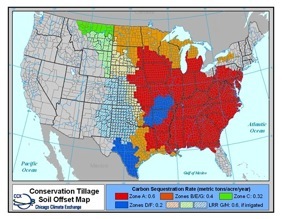

Methane burn off at a landfill
Copyright Conquest Communications 2009 all rights reserved, no reproduction of content allowed.
For web related concerns contact web@co2eproject.com



